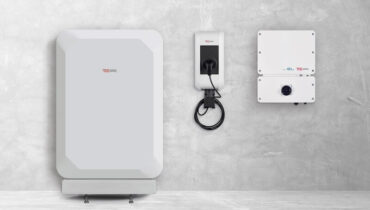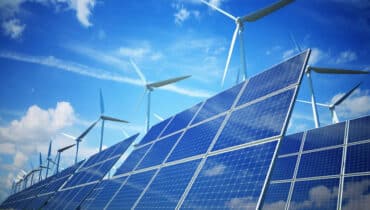Solar panels are a popular and environmentally friendly way to generate electricity. However, excessive heat can affect their performance and overall efficiency. In this article, we will explore effective strategies to reduce the temperature of solar panels, ensuring optimal performance and prolonged lifespan.
Table of Contents
Understanding the Impact of Temperature on Solar Panel Performance
Solar panels are designed to convert sunlight into electricity through the photovoltaic effect. However, as the temperature of solar panels increases, their efficiency decreases. The power output of a solar panel typically decreases by around 0.5% for every degree Celsius above the standard temperature of 25°C. High temperatures not only reduce power output but can also cause potential long-term damage to the panels.
Enhancing Air Circulation and Ventilation
Proper air circulation is crucial for maintaining lower temperatures in solar panels. Let’s explore effective strategies to enhance air circulation and promote panel cooling.
Positioning and Mounting Considerations
- Optimal panel placement: Orient the panels to minimize direct exposure to the sun during the hottest part of the day. By adjusting the tilt and azimuth angle of the panels, you can reduce heat absorption and maintain cooler temperatures.
- Allow for spacing: Ensure that there is ample spacing between individual solar panels to promote airflow. Crowding panels together can impede air circulation and trap heat, leading to increased temperatures.
Installing Ventilation Systems
- Natural ventilation: Create a gap for natural airflow by installing elevated mounts or racks underneath the solar panels. This allows air to circulate and dissipate heat effectively.
- Forced ventilation: Consider installing fans or blowers strategically to actively move air across the panels. This is particularly useful in areas with limited natural airflow, such as urban environments or locations surrounded by buildings.
Minimizing Heat Absorption
Reducing the amount of heat absorbed by solar panels is crucial for maintaining lower temperatures and improving their performance. Let’s explore effective measures to minimize heat absorption.
Reflective Surfaces
- Light-colored surroundings: Paint the area surrounding the solar panels with light-colored or reflective materials. This helps reduce the absorption of heat from the ground, nearby buildings, or objects, keeping the panels cooler.
- Reflective coatings: Apply specialized reflective coatings on the surface of the solar panels. These coatings enhance their ability to reflect sunlight instead of absorbing it, minimizing heat buildup.
Shade Structures
Shade sails or awnings: Install shade structures above the solar panels to shield them from direct sunlight. This reduces the amount of heat they absorb, keeping them cooler and maintaining higher efficiency.
Implementing Cooling Technologies
Innovative cooling technologies can actively reduce the temperature of solar panels and enhance their efficiency. Let’s explore some effective cooling techniques.
Passive Cooling Systems
- Heat sinks: Attach heat sinks or heat-dissipating materials to the back of solar panels. These materials absorb and dissipate excess heat, preventing it from affecting the panel’s performance and reducing overall temperature.
- Thermally conductive materials: Incorporate thermally conductive materials, such as aluminum, in the panel structure. These materials enhance heat transfer away from the solar panels, keeping them cooler.
Active Cooling Systems
- Water cooling: Install a water cooling system that circulates water behind or over the surface of the solar panels. This helps dissipate heat and maintains lower panel temperatures, improving overall efficiency.
- Phase change materials: Utilize phase change materials that can absorb excess heat and undergo a phase change, effectively cooling the panels and enhancing their performance.
Conclusion:
Reducing the temperature of solar panels is essential for maximizing their efficiency and extending their lifespan. By implementing strategies such as enhancing

